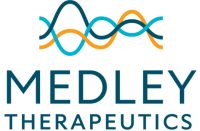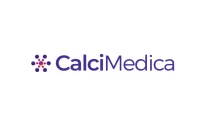TCT Presentation of DISRUPT CAD II EU Post-Market Study Confirms Promissory DISRUPT CAD I Results
Data Published Simultaneously in Circulation: Cardiovascular Interventions
SANTA CLARA, Calif., Sept. 25, 2019 (GLOBE NEWSWIRE) — Shockwave Medical, Inc. (NASDAQ: SWAV), a pioneer in the development of Intravascular Lithotripsy (IVL) to treat complex calcified cardiovascular disease, unveiled the results of the DISRUPT CAD II study, a European post-market study of coronary IVL, at the Transcatheter Cardiovascular Therapeutics (TCT) 2019 Conference in a “High Impact Clinical Research” session. Coronary IVL is an innovative lesion preparation tool designed to fracture challenging calcium using sonic pressure waves in order to facilitate stent delivery, deployment and optimal expansion. The DISRUPT CAD II outcomes confirmed the initial results from the DISRUPT CAD I study – that IVL may be safely performed with high procedural success and minimal complications. In conjunction with the TCT presentation, the results were published simultaneously in Circulation: Cardiovascular Interventions.
“The results of Disrupt CAD II are remarkably consistent with those reported in the Disrupt CAD I feasibility study, validating the safety and utility of coronary IVL,” said Professor Carlo Di Mario, M.D. of University of Florence in Italy, co-principal investigator of CAD II and presenter at TCT. “Based on these two studies, I believe IVL will set the bar for a new standard of safety associated with the treatment of challenging, heavily calcified lesions.”
DISRUPT CAD II was a prospective, non-randomized, multicenter study designed to confirm the safety and performance of the DISRUPT CAD I study that supported CE Mark approval of the Shockwave Coronary IVL System. DISRUPT CAD II was a post-market study intended to confirm the CAD I results in a larger number of patients and centers, enrolling 120 patients with de novo, calcified, stenotic, coronary artery disease at 15 European centers.
“The excellent outcomes of the CAD II study not only verify the safety of coronary IVL, but they also highlight some of the technology’s more unique capabilities, including the ability to modify various types of calcium,” said Professor Jean Fajadet of Clinique Pasteur in Toulouse, France, the other co-principal investigator in the study. “With these benefits and the consistent clinical data we have generated so far, IVL has proven to be a feasible front-line tool for calcium modification.”
In the 120 patients enrolled in the CAD II study, severe calcification by independent angiographic core lab analysis was observed in 94 percent of lesions, which were both concentric (72 percent) and eccentric (28 percent). The primary safety endpoint was met, with 94.2 percent of patients free from in-hospital major adverse cardiac events (MACE); MACE was driven entirely by seven non-Q-wave myocardial infarctions (MI). There were no reports of perforation, slow flow, no-reflow, or major dissections (defined as type D, E, or F) at any point in the study. At 30-day follow-up, the MACE rate remained low at 7.6 percent, with a single additional cardiac death, Q-wave MI and target vessel revascularization.
Of the 120 patients in the study, investigators were able to successfully deliver and use IVL in all patients. IVL facilitated successful stent delivery in all cases, which reduced stenoses in severely calcified coronary arteries to a residual of less than 8 percent with an acute gain of 1.7 mm2. In 47 of the 120 patients in which concomitant optical coherence tomography (OCT) imaging was performed, calcium fractures were identified in 79 percent of lesions, averaging more than three fractures per lesion.
Shockwave C2 Coronary IVL catheters are commercially available for the treatment of de novo coronary artery disease in Europe and other select countries; in the United States they are limited to investigational use within the DISRUPT CAD III IDE Study.
About Shockwave Medical, Inc.
Shockwave Medical is focused on developing and commercializing products intended to transform the treatment of calcified vascular disease by establishing a new standard of care with Intravascular Lithotripsy (IVL). IVL seeks to minimize trauma within the artery by delivering pulsatile sonic pressure waves locally to fracture both intimal and medial calcium in the artery wall, but pass through surrounding soft vascular tissue in a safe manner. To view an animation of the IVL procedure and for more information, visit www.shockwavemedical.com.
Forward-Looking Statements
This press release may contain statements relating to Shockwave’s expectations, projections, beliefs, and prospects (including any statements regarding the future success, safety profile or commercialization of IVL and Shockwave’s ability to receive FDA clearance for, and begin commercializing, the Shockwave IVL System with the Shockwave C2 Coronary IVL Catheter in the United States), which are “forward-looking statements” within the meaning of the federal securities laws and by their nature are uncertain. Words such as “believe,” “may,” “will,” “estimate,” “continue,” “anticipate,” “intend,” “expect,” “plans,” and similar expressions are intended to identify forward-looking statements. Such forward-looking statements are not guarantees of future performance, and you are cautioned not to place undue reliance on these forward-looking statements. Our business and operations are subject to a variety of risks and uncertainties and, consequently, actual results may differ materially from those projected by any forward-looking statements. Factors that could cause actual results to differ from those projected include, but are not limited to: failure to sustain or grow profitability; failure to effectively market existing products; failure to effectively introduce and market new products; delays in product introductions; significant competition; inability to further penetrate our current customer base and increase the frequency of use of our products by our customers; inability to achieve or maintain satisfactory pricing and margins; manufacturing difficulties; the inability to attain coverage and adequate reimbursement for procedures using our products; permanent write-downs or write-offs of our inventory; product defects or failures; unfavorable outcomes in clinical trials; inability to maintain our culture as we grow; fluctuations in foreign currency exchange rates; potential adverse regulatory actions; and potential impact of any future acquisitions, mergers, dispositions, joint ventures or investments we may make. These risks and uncertainties, as well as others, are discussed in greater detail in our filings with the Securities and Exchange Commission (SEC), including under the section entitled “Risk Factors” in our prospectus dated March 6, 2019. There may be additional risks of which we are not presently aware or that we currently believe are immaterial which could have an adverse impact on our business. Any forward-looking statements are based on our current expectations, estimates and assumptions regarding future events and are applicable only as of the dates of such statements. We make no commitment to revise or update any forward-looking statements in order to reflect events or circumstances that may change.
Media Contact:
Scott Shadiow
+1.317.432.9210
sshadiow@shockwavemedical.com
Investor Contact:
Debbie Kaster, Gilmartin Group
investors@shockwavemedical.com





